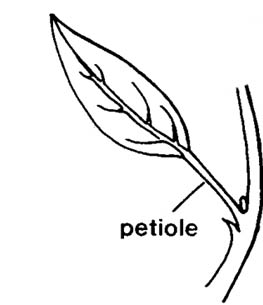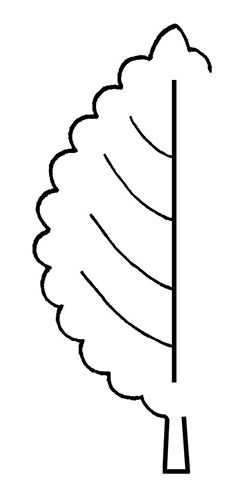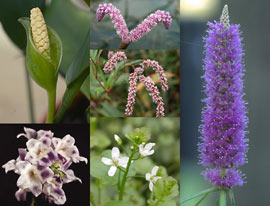Villarsia Vent.
water fringe, marsh-flower
Menyanthaceae
Damasonium, Nymphoides, Ornduffia
Southeast Asia, Australia, South Africa.
Villarsia albiflora F. Muell. [synonym of Ornduffia albiflora (F. Muell.) Tippery & Les]
V. exaltata F. Muell.
V. umbricola Aston
none
not weedy
emergentemergent:
(adj) (syn. emersed) with parts raised out of the water; extending up out of the water
floating or broad-leaf rosetterosette:
(n) a radiating cluster of leaves, usually close to the ground at the base of a plant
 plant
plant
Annual or perennialperennial:
(adj) (of a plant) having a life cycle of more than two years
. Monoeciousmonoecious:
(adj) having separate male and female flowers on the same individual
or dioeciousdioecious:
(adj) having separate male and female flowers on different individuals of the same species
. Sometimes stoloniferous. Leaves submergedsubmerged:
(adj) (syn. submersed) under water; submerged below the water surface
, floating or emergentemergent:
(adj) (syn. emersed) with parts raised out of the water; extending up out of the water
, in basalbasal:
(adj) at or pertaining to the base, or point of attachment
rosetterosette:
(n) a radiating cluster of leaves, usually close to the ground at the base of a plant
 ; petiolepetiole:
; petiolepetiole:
(n) the stalk of a leaf
 elongate; leaf bladeblade:
elongate; leaf bladeblade:
(n) (syn. lamina) the flat, expanded part of a leaf, frond, or petal (excluding, e.g., the petiole)
 ellipticelliptical:
ellipticelliptical:
(adj) in the form of an ellipse (oval)
 to reniformreniform:
to reniformreniform:
(adj) kidney-shaped
 ; marginmargin:
; marginmargin:
(n) edge; rim
entire or crenatecrenate:
(adj) (of a margin) with shallow, rounded teeth
 . Inflorescenceinflorescence:
. Inflorescenceinflorescence:
(n) the arrangement of flowers on the floral axis
 an open paniclepanicle:
an open paniclepanicle:
(n) an indeterminate, branched (often much-branched) inflorescence; the ultimate units may be of a different inflorescence type
 or rarely a dense headhead:
or rarely a dense headhead:
(n) inflorescence consisting of small closely packed stalkless flowers or florets arising at the same level on a flattened axis; of several types, including: discoid (composed entirely of disk flowers) and radiate (composed of central disk flowers and marginal ray flowers)
. Sepals 5; petals 5, fused at base, conspicuous, usually yellow or white, fimbriatefimbriate:
(adj) fringed with long hairs or processes
(hairy) in throat, undulateundulate:
(adj) (of, e.g., a margin) with a wavy surface; wavy in the vertical (up and down) plane
along margins. Dispersal by seed.
shallow water of swamps, ponds, and streams; adapts quickly to rising floodwaters by rapid petiolepetiole:
(n) the stalk of a leaf
 elongation
elongation
Villarsia consists of 5 species, mostly in Asia and Australia, although three species are found in South Africa. This genus is closely related to Nymphoides, with some species being placed in that genus by some authorities. Two commonly cultivated species are now placed in Ornduffia, but are offered under Villarsia.